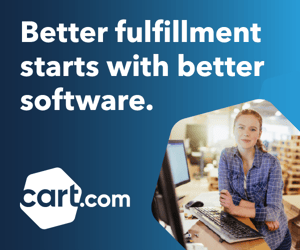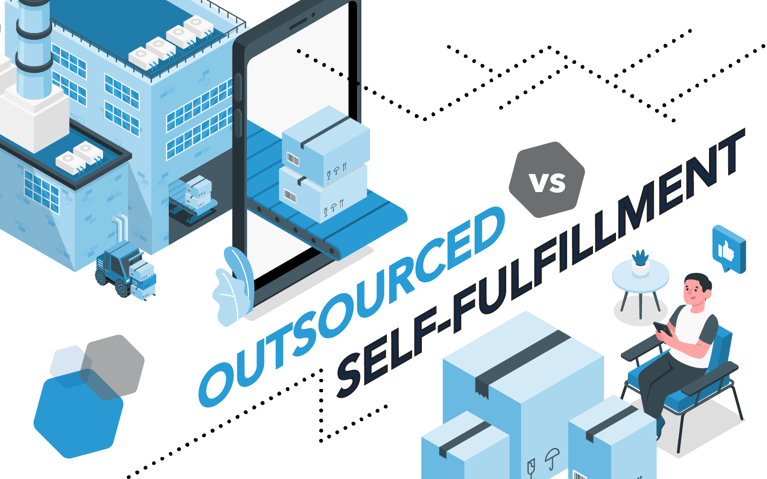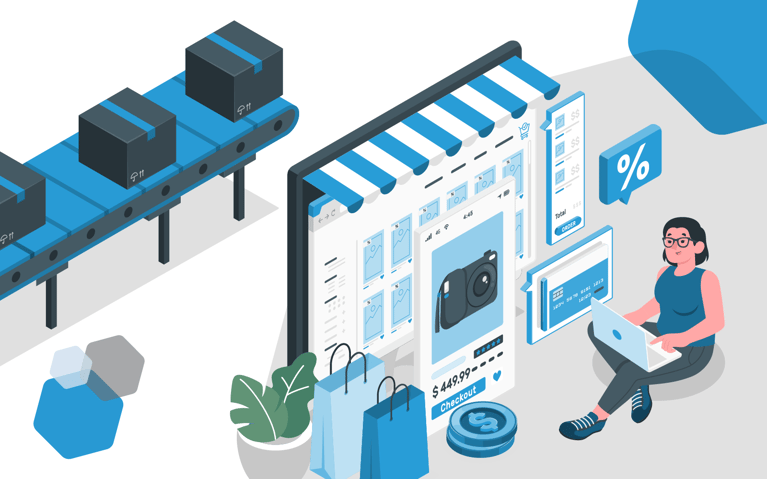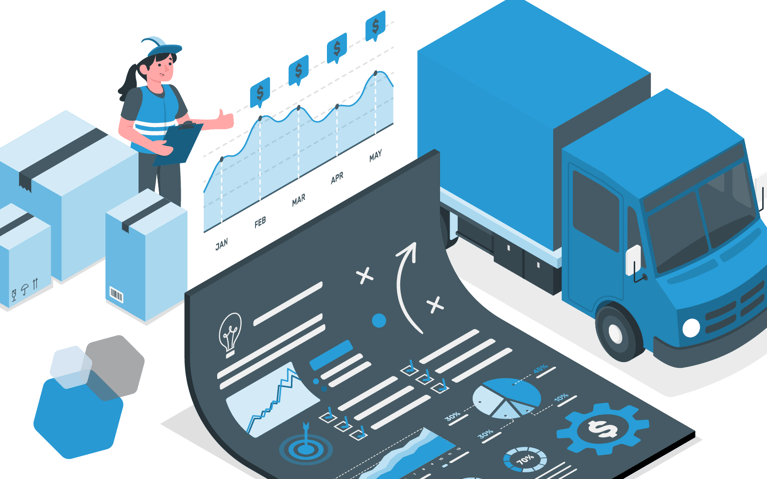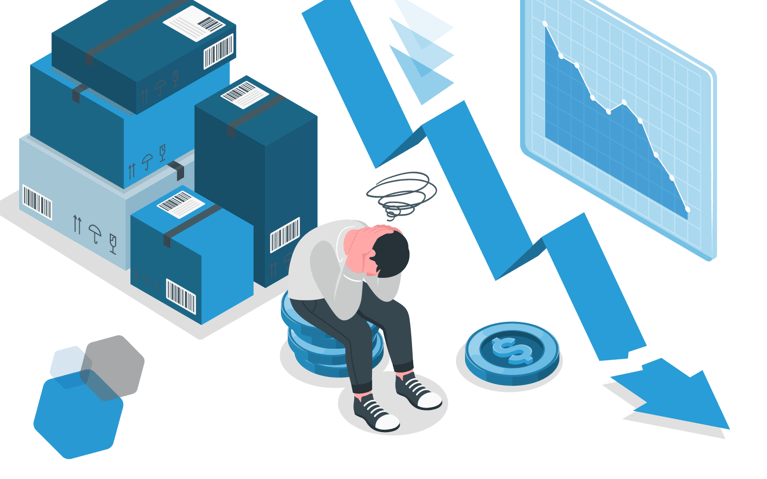Originally posted August 9, 2023, updated June 6, 2024 by A. Wolfe.
Self-fulfillment may feel like an attractive way to grow and scale your brand while also maintaining control of your fulfillment operations. However, it can come at a great cost. Renting a fulfillment warehouse may seem affordable initially. You have the flexibility to scale up or down based on your needs, and you avoid the hefty upfront costs associated with purchasing property. But let's not forget about the monthly rental fees, which can add up over time. Plus, there might be additional costs for utilities, maintenance and other operational expenses that aren't always included in the rent.
Owning a warehouse is a whole different ball game. The initial investment is steep, and it’s not just the purchase price. There are costs for renovations, outfitting the space with the necessary technology and equipment and ongoing maintenance. However, maybe you think the long-term benefits are substantial. Owning the space means you're building equity over time and have complete control over the facility. No more worrying about rent hikes or lease negotiations. Plus, if you outgrow the space, you have the option to lease it out or sell it.
Yet, digging deeper, it’s worth considering the additional costs in both scenarios. Running your own fulfillment warehouse incurs several operational costs, including utilities (electricity, water, heating and cooling), maintenance and repairs, staffing (salaries, benefits, training) and technology expenses (software, hardware, security systems). Additionally, there are costs for equipment (forklifts, conveyors), inventory management, insurance and regulatory compliance. These expenses can add up quickly, impacting your overall profitability and operational efficiency.
This is when the advantages of a third-party logistics (3PL) service start to look very attractive.
What Is a third-party fulfillment service and how does it work?
A third-party fulfillment service, often called third-party logistics or 3PL, handles the entire fulfillment process for companies. This includes warehousing inventory, picking and packing and shipping orders to customers.
While many know that 3PLs handle warehousing and shipping, they also manage several lesser-known operations for brands:
- Kitting and assembly: Combining individual items into ready-to-ship packages or sets.
- Returns management: Efficiently processing returns and refurbishing or recycling products.
- Custom packaging: Designing and implementing tailored packaging solutions to enhance brand experience.
- Labeling and barcoding: Applying labels and barcodes to products to ensure accurate tracking and compliance.
- Subscription box fulfillment: Managing the assembly and shipment of subscription-based products.
- Cross-docking: Transferring products directly from inbound to outbound transportation with minimal storage time.
- Retail compliance: Ensuring shipments meet specific retailer requirements and standards.
- International shipping and customs: Navigating complex international shipping regulations and customs processes.
- Quality control: Conducting inspections and quality checks to maintain product standards.
- Data and analytics: Providing detailed reporting and insights to help brands optimize their supply chain and inventory management.
- Demand forecasting: Analyzing historical data and market trends to predict future product demand, ensuring optimal inventory levels and reducing the risk of stockouts or overstocking.
Advantages of third-party fulfillment
In most cases, working with a 3PL reduces the cost per order compared to managing operations in-house. This is especially true of businesses that are seasonal or have low sales volume during certain times of the year. By outsourcing, you avoid paying for warehouse space and services you only use at intervals. For retailers that sell consistently throughout the year, 3PLs also provide several other key advantages.
Streamlined operations
Using a fulfillment provider helps streamline operations by relieving the burden of logistics. Automated processes such as pick/pack/ship, optimal warehouse configuration and other technologies create a more efficient operation and reduce errors. By integrating with client order management systems (OMS), 3PLs can receive orders in real-time, eliminating manual entry or order sheets. Some 3PLs offer a proprietary OMS that integrates with existing retail tech stacks as well as other internal software. For example, many 3PLs also use warehouse management systems (WMS) to optimize warehouse operations and transportation management systems (TMS) to manage shipping at scale. This includes optimizing routes and loads, balancing negotiated rates with spot rates and choosing among various carriers to ensure cost efficiency and timely deliveries.
Shipping cost savings and scalability
Third-party fulfillment provides more affordable shipping due to its business model. Savings can come from:
- Consolidation: By handling shipping for multiple businesses, 3PLs can consolidate orders into larger shipments, taking advantage of full-truckload (FTL) prices rather than less-than-truckload (LTL) pricing.
- Negotiated rates: The consistent volume created by 3PLs allows them to negotiate better rates and discounts with shipping companies.
- Optimization: 3PLs know the optimal shipping times and strategies for the most cost-effective delivery methods.
- Location: Fulfillment centers are typically located near shipping hubs or target markets, reducing transportation costs even for two-day or same-day deliveries.
Scaling fulfillment is easier by paying for more available space rather than building out warehouse space or committing to longer-term rentals. Most fulfillment centers can scale quickly to accommodate growing businesses.
Minimize overhead costs and infrastructure investments
Sellers can minimize overhead and infrastructure costs by avoiding the acquisition of warehouse space and staffing for warehouse management. Rather than buying or leasing storage space, retailers can outsource warehouse management. Since 3PLs work with multiple vendors, the costs for maintaining the warehouse are amortized across multiple companies, reducing overall expenses.
Ecommerce businesses also avoid the costs of warehouse equipment and the technology needed for ongoing operations, which can be hefty. These expenses include repair, upgrade or replacement of warehouse equipment over time and the costs of maintaining efficiency.
Flexibility and scalability to meet fluctuating order volumes
Third-party fulfillment providers can efficiently scale to handle peak volumes using advanced inventory management systems to help optimize inventory turnover. This enables 3PLs to handle high-volume order fulfillment that sellers might not otherwise have the capacity to manage.
Focus on core competencies
One of the biggest advantages of working with a 3PL for fulfillment is that it frees up time and resources to focus on strategic initiatives rather than fulfillment. By outsourcing to specialists, you can leverage their knowledge and resources. This leaves you more open to focusing on what you do best – build your business.
Redirect resources to core business activities
Without worrying about fulfillment logistics, you can focus time and money on growing the business. Freed from operational fulfillment tasks, more resources can be allocated to marketing, sales and customer service. You can also focus financial resources more efficiently, applying capital directly to inventory, marketing and business expansion rather than warehouse space and equipment. Outsourcing makes budgeting predictable and allows for taking advantage of new opportunities as they arise.
Leverage the expertise and experience of fulfillment specialists
3PLs concentrate their resources on fulfillment and shipping for peak efficiency. They employ best practices and strategies to streamline their processes. Coupled with the latest warehouse technology, this allows them to lower costs and improve service quality. Oftentimes, a 3PL offers a customer success staff. These teams can work together with clients to address challenges, further improve efficiency and meet the brand expectations.
Reduce labor force concerns
With warehouse worker turnover rates approaching 50%, hiring, staffing, training and retaining qualified employees is no small task. Investing in technology to reduce staffing needs is also expensive. When you engage a third-party fulfillment provider, they handle the workforce, technology and management. This outsourcing eliminates the headache of managing warehouse and fulfillment staff, ensuring you have enough staff to handle orders and dealing with scheduling, overtime and rapid hiring or downsizing as business ebbs and flows.
Mitigate risks and improve the customer experience
Every retailer knows that damage to their reputation will hurt profits. Mistakes, poor customer experiences or delays in processing and shipping orders can severely impact customer loyalty. A PwC study revealed that nearly a third of customers say they would stop doing business with a brand they loved after a single bad experience. The services and expertise a 3PL offers can reduce issues and mistakes, creating a better experience and happier customers.
Reduce errors and order inaccuracies
Order fulfillment mistakes, mis-picks and mis-ships are costly. These errors risk customer satisfaction and incur additional costs for return shipping, restocking, and reshipping items. Merchandise may also be damaged in transport or unsellable once returned. When you add up the costs and labor involved in fixing mistakes, it can cost companies between $50 to $75 for each error. Even a 1% error rate can add up fast. For instance, if you ship 100,000 items per year, a 1% error rate can cost $75,000. For large-volume shippers, the cost increases significantly. Typically, 3PLs guarantee a certain level of order accuracy in their contracts, including performance standards and consequences for non-compliance.
Handle returns and customer support effectively
Handling returns is an inherent cost of doing business, especially for ecommerce companies, which have high return rates compared to physical stores. About 30% of all products bought online are returned, more than three times the rate of brick-and-mortar stores.
Even if there was no error during fulfillment, you may have to absorb the cost of shipping. There are also costs for customer service, handling and processing, and restocking or liquidation. In 2022, it was estimated that the cost of handling a return for a single $50 item can be $33, nearly two-thirds of the item’s sale price. Aberdeen Group reports that reverse logistics in the U.S. add $100 billion to operating costs yearly.
3PLs are often highly efficient at handling returns. They use technology to streamline return authorizations and labeling, inspection and sorting of returns, inventory management and providing customer support for issues. Third-party providers know that handling returns properly is essential to keeping customers happy, so they work hard to ensure smooth operations.
Start with a 3PL today
Using a nationwide network of facilities and cutting-edge logistics software, Cart.com provides ecommerce fulfillment, contract logistics, 3PL services, and advanced proprietary software. As ecommerce experts and unified commerce experts, Cart.com can handle your omnichannel fulfillment needs with industry-leading accuracy and transparent tracking and monitoring. Contact us today to find out more.
Subscribe to our emails for the latest industry insights!
By entering your email, you agree to receive marketing emails from Cart.com




